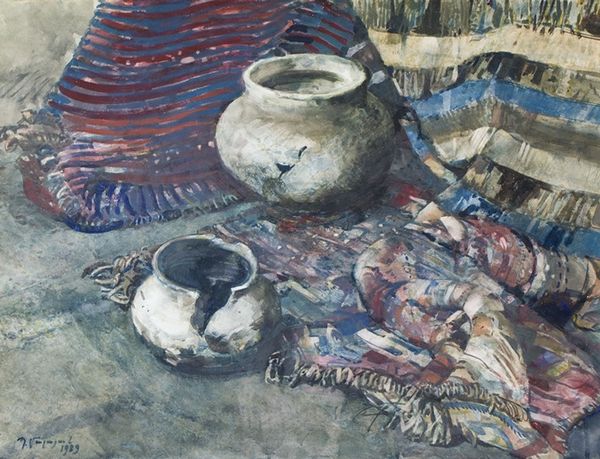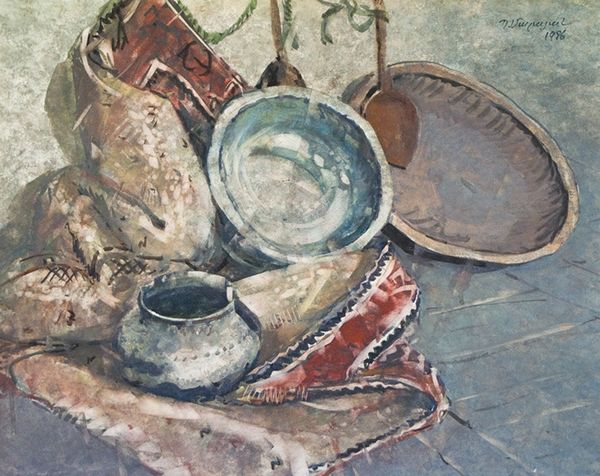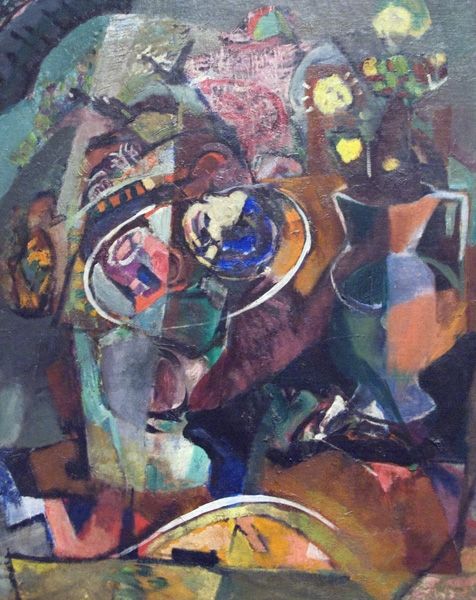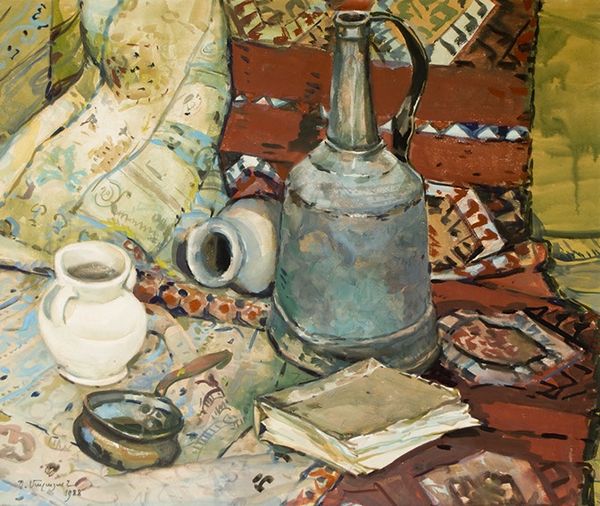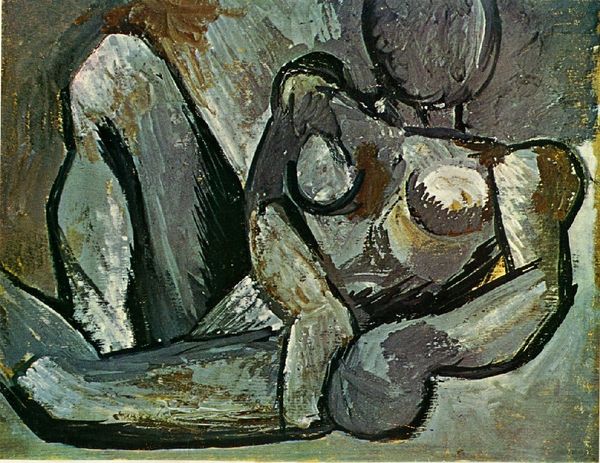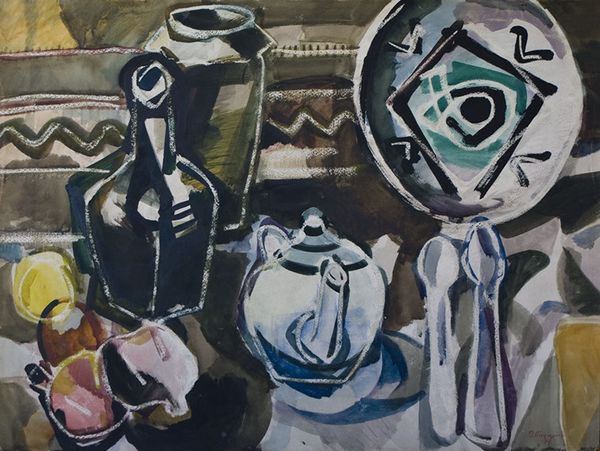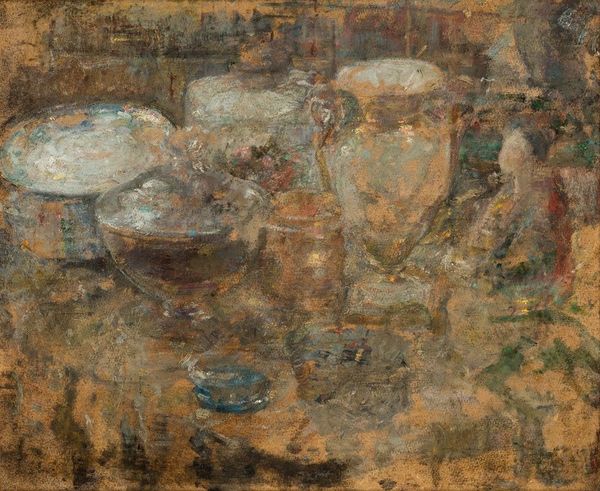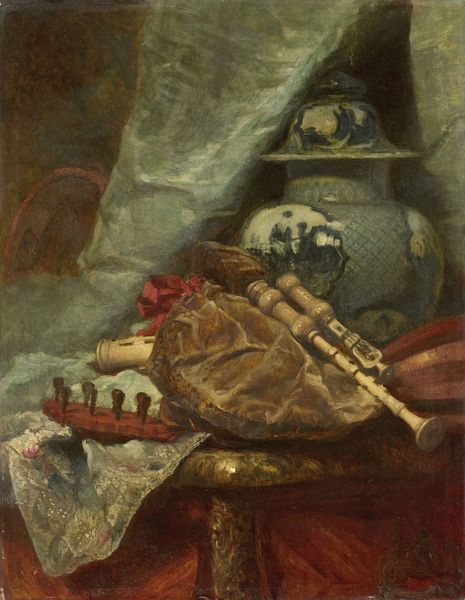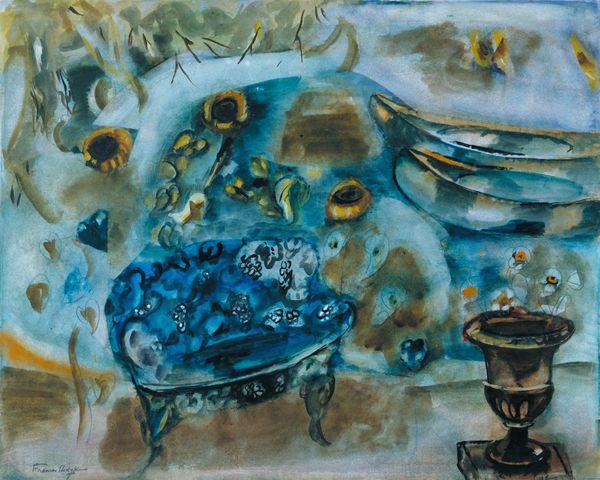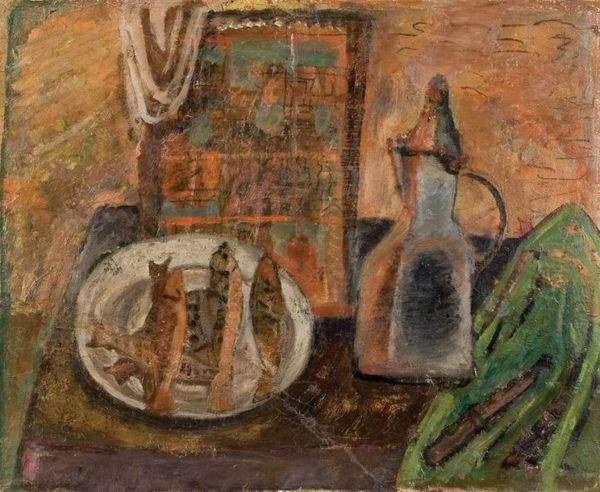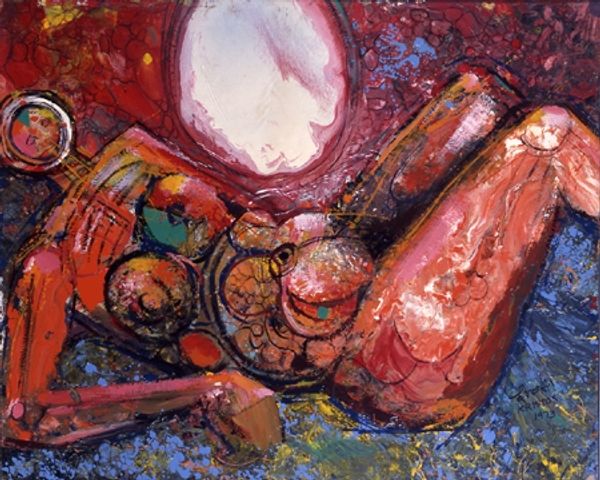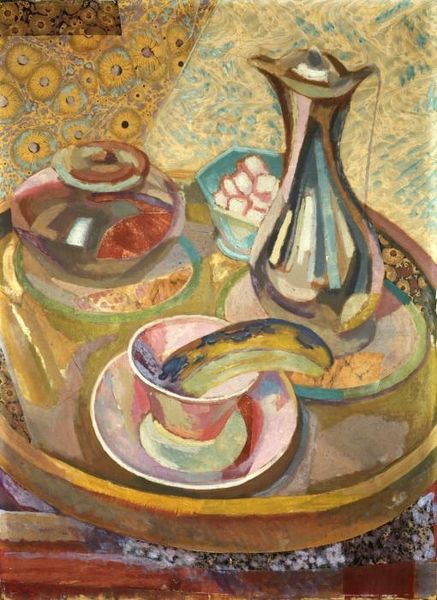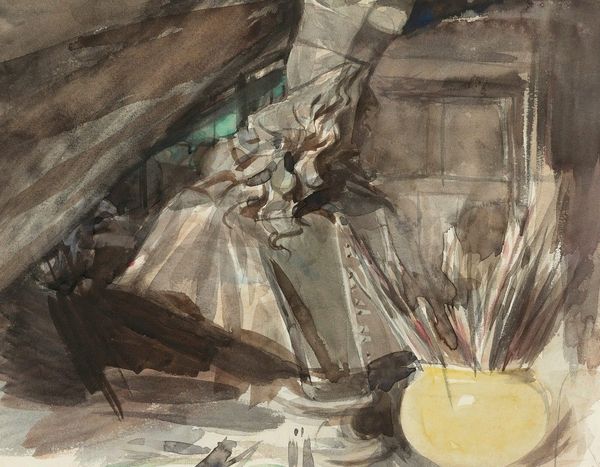
oil-paint
#
oil-paint
#
oil painting
#
orientalism
#
realism
Copyright: Petros Malayan,Fair Use
Editor: So, this is Petros Malayan's "Still Life with Armenian Carpet," painted in 1985, using oil paints. It's... darker than I expected. The composition feels very grounded, almost heavy, with all those earthy tones and the density of the objects. What do you see in this piece? Curator: For me, this painting speaks volumes about cultural identity and representation. The Armenian carpet isn’t just a decorative element; it’s a powerful symbol of heritage, particularly in the context of the 20th century and the Armenian diaspora following the genocide. The objects – the pot, the metal bowl – seem very domestic, placing that heritage within an intimate, personal sphere. What kind of dialogue do you think Malayan is creating here between private life and public identity? Editor: That's interesting, I hadn't considered the carpet as something more than just background. The darkness now seems less about the colors themselves and more about a feeling, a kind of...burden maybe? The objects *do* give a sense of intimacy; like looking into someone’s home. Do you think displaying heritage like this could also have been a political statement in 1985? Curator: Absolutely. Even in a still life, representing cultural identity is a potent political act, especially when considering the socio-political climate in 1985 and Armenian history within the Soviet Union. The act of making visible, of preserving cultural memory through art, is inherently a challenge to dominant narratives, wouldn't you agree? Editor: Definitely! It’s much more than just a pretty picture then; it’s a quiet assertion of identity and survival. Thanks for pointing that out, it completely shifted my perspective. Curator: And thank you for your observations, it reminds us of the important public role that art plays and to always look beyond what meets the eye.
Comments
No comments
Be the first to comment and join the conversation on the ultimate creative platform.
